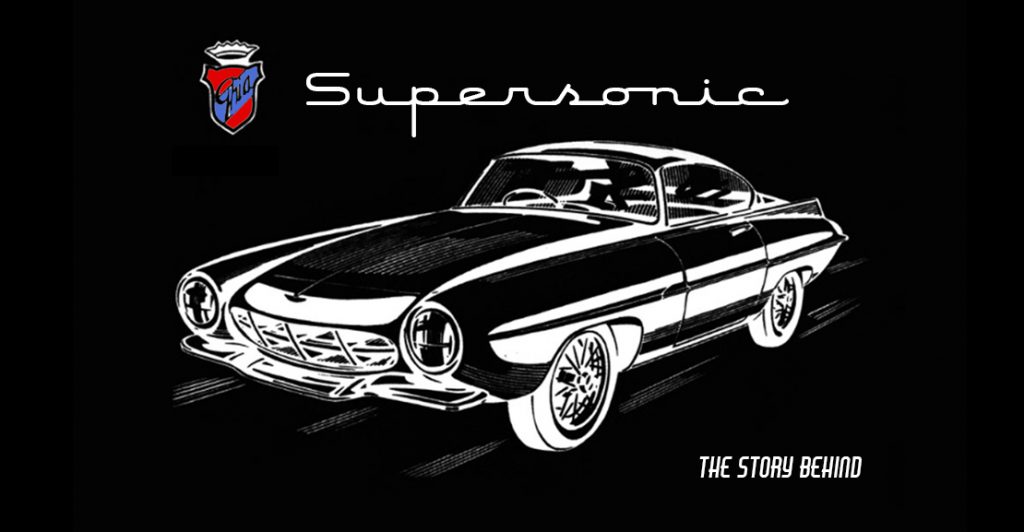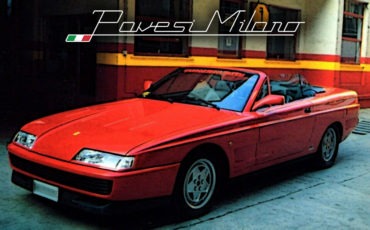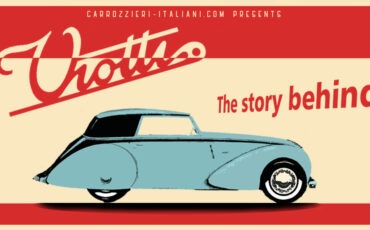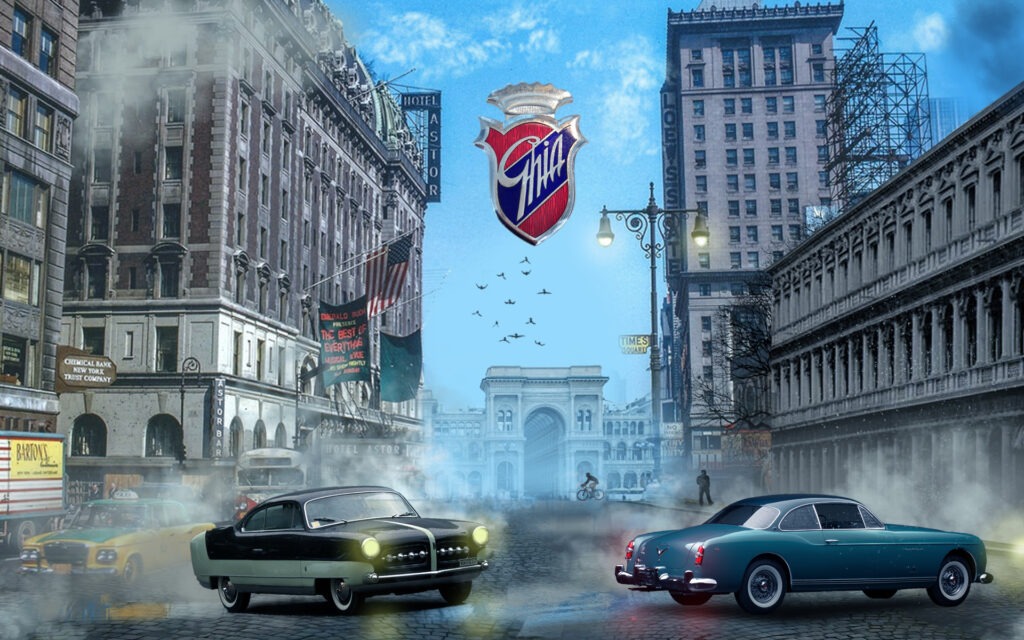
The revolution by Savonuzzi
The succession of prototypes made on behalf of Chrysler undoubtedly influenced the 1951 project by Piero Dusio, patron of Cisitalia, to try to ride the wave of the American success of the berlinetta 202. This study for a new coupe on Mercury mechanics, baptized 808 XF, was entrusted to Savonuzzi, while Ghia took care of the preparation. The result was a very sober, elegant and modern car, in whose lines the similarities with the sports cars defined by Virgil Exner were evident. But nothing was done of that splendid car; in 1953, that experience resulted in the Cisitalia 505 DF, based on the Fiat 1900, of which ten units were produced. Ghia Serie Speciale SpA was formed in 1954, into which Ghia itself, the Monviso SpA factories and OSI SpA joined forces in the new premises in corso Unione Sovietica 75-79, formerly the headquarters of Monviso (which was entirely acquired in 1955).
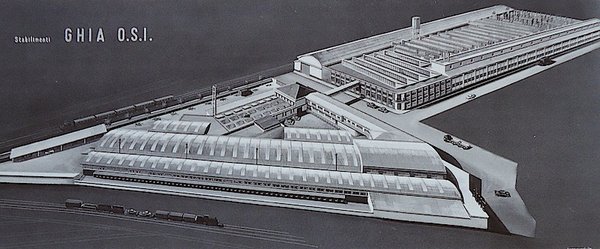
The functions of technical director at Ghia were assumed by engineer Giovanni Savonuzzi. He was already well known in the car industry, after having worked in the aeronautical sector; during the war, he collaborated at Fiat with Dante Giacosa, who appointed Piero Dusio for the project of the Cisitalia D46 and the berlinettas 202. On his arrival at Ghia he contributed with new bodywork projects – some of which also for Chrysler – and above all he brought to the company new methods and refined processing techniques. When he was still an external consultant for Ghia, a project had caused a sensation: a coupé conceived for the Mille Miglia of 1953, equipped with a tubular frame and mechanical parts derived from the Alfa Romeo 1900 Sprint (four carburetor engine, 130 HP), from the Lancia Aurelia (transmission, rear axle and steering) and from the Fiat 1400 (front end), all assembled by Carlo Abarth and tuned by Virgilio Conrero.
Read more: “Ghia Supersonic“
Based on that same basic approach, the new technical director devised the Supersonic model on the latest chassis of the Fiat 8V, which was presented in 1954 and later replicated with the mechanics of the Jaguar XK 120 and that of the Aston Martin DB2. The Supersonic was also proposed on the Adventurer II with De Soto mechanics, a high-level brand of the Chrysler group. Chrysler also wanted to support the Gilda project, on which Savonuzzi intended to experiment with the presence of rear fins to balance the action of the side wind in speed with respect to the center of gravity of the car. He prepared a special reduced-scale car for the wind tunnel of the Polytechnic of Turin to better define the line of the prototype, which was a huge attraction at the 1955 Turin Motor Show, where the Gilda was presented as “a body of high aerodynamic characteristics in the pursuit of profile and style“.
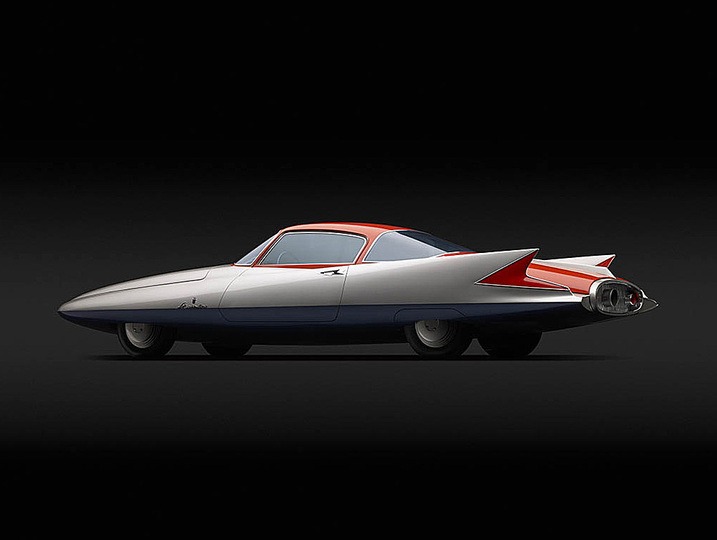
That same year, Ghia incorporated the Carrozzeria Stabilimenti Monviso, founded ten years earlier by Alessandro Casalis for the production of custom-built cars and above all of “elaborated” cars, that is, cars of normal production to which some variations of an aesthetic nature were made, such as a different design or the rear tails or two-tone painting. With the liquidation of Monviso and the entry of Casalis to Ghia as managing director, Segre gained new large workshop rooms and specialized workers, which resulted in better management of the contracts for the orders from builders in Italy and abroad.
With the promising slogan “exciting cars”, Chrysler exhibited at the entrance of the Chrysler Building in New York three prototypes made by Ghia for the Christmas holidays of 1955; that was the opportunity to probe the taste of local motorists with some proposals that could find confirmation in future series production. Defined not as a dream car but as an “concept car”, that is cars susceptible to real industrial development, Chrysler presents the Flight Sweep in closed and open versions, as well as the Falcon cabriolet, attracting over one and a half million visitors who were delighted in front of those harmonious machines, defined by the American press with the expression “Italian shapes”. They did not go to production, but sent a precious message to the American factory about the orientations that would mark the choices of the public in the not too distant future.
Two americans in Turin
Segre’s final agreement with the Americans to transform a small series of the Imperial – the most prestigious brand of the American group – predicted that the production cars would be sent to Turin to be disassembled, lengthened, re-designed and then offered on the overseas market under the Ghia Crown Imperial brand. All over the world they became the most sought after parade cars for the important events in which the sovereigns or the most famous characters of the time participated. The contract for their supply was renewed for nine years, from 1957 to 1965.
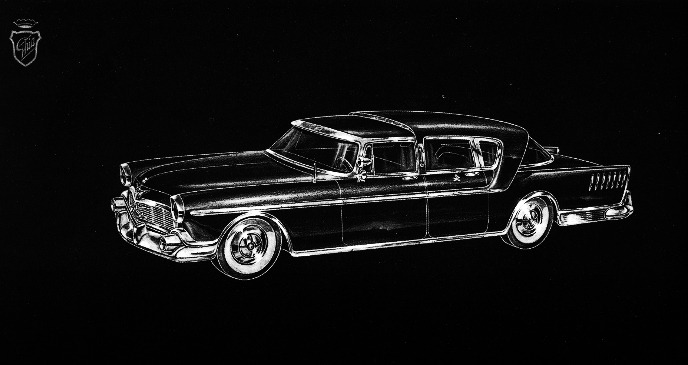
In a dramatic succession of events, 1957 recorded the resignation of Giovanni Savonuzzi, called by Chrysler in the United States, as well as the new transfer of Ghia to via Agostino da Montefeltro 7, in Turin, which occurred in conjunction with the incorporation of Carrozzeria Pietro Frua and its appointment as head of the Style Office, even if the controversial authorship of the Renault Floride project – carried out by Frua but claimed by Segre within the framework of the new company organization – led the two protagonists of the affair to court. The same happened with the Volvo P1800 coupe, whose design was later claimed by the Swedish Palle Patterson and also contested by Sergio Sartorelli, who at the time worked at Ghia as head of the “future cars” design department. After Frua left the scene, stylistic design at Ghia was entrusted to Sergio Sartorelli and Sergio Coggiola, the first with a solid theoretical and academic background, the second with an extraordinary intuition in visualizing a new model with remarkable aesthetic sensitivity, despite not having a specific university preparation. Towards the end of the 1950s, the fashion for beach cars exploded, interpreted by Ghia with the Jolly models, mostly set up on bodies derived from those of the Fiat 600 and Fiat 500 series, from which the roof and the entire passenger compartment were removed, replaced by a curious awning and four wicker seats, all made in a Spartan way and with nautical-inspired details. The same formula was then adopted on the Renault 4CV platform. On behalf of the first French manufacturer, Ghia also intervened with the scarcely credible proposal of a luxury version of the R4 (1960).
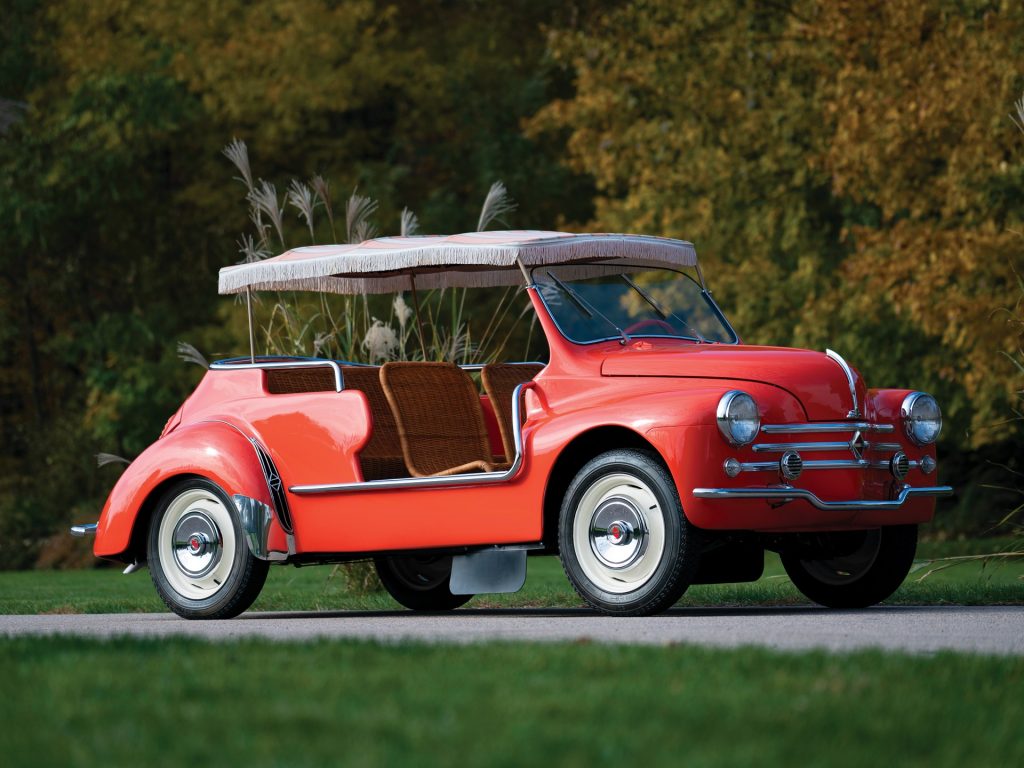
The arrival in 1959 of the newly graduated architect Tom Tjaarda from the United States played an important role in the design development at Ghia. Son of a car designer (his father John designed the Lincoln Zephyr sedan in 1935, a courageous aerodynamic proposal competing with the 1934 Chrysler Airflow) with a fervent passion for the car, he developed two almost antithetical projects, the small spider Innocenti 950 (later fitted by Ghia on the chassis of the Austin Healey Sprite) and the Selene, a futuristic, advanced driving car with ample space for six people, which also enjoyed success in the Soviet Union, where it was even thought of deriving a version for taxi service. In 1961, Tjaarda also participated with Sergio Sartorelli in the definition of the Fiat Coupé 2300 project and of that for the 1300-1500 coupé, whose assembly in small series was planned at Osi (Officine Stampaggi Industriali), which acts as a structure parallel to Ghia with the function of producing special series, for which resorting to conventional assembly lines was impracticable.
Virgil Exner Junior, son of the famous Virgil who had drastically re-launched the Chrysler group cars on the US market, aspired to work in Turin at Ghia, where he enjoyed a protected image which aroused the undeniable nervousness of Tom Tjaarda, who evidently could not count on similar availability on the part of Segre. The dissent between these and Tjaarda led to the latter resigning in 1961, after very interesting formative years in Turin. The young Exner did not, however, enter the Turin Style Office as manager, although he had left an evident sign of his presence during the military stop in Germany, where he developed his engineering thesis with a futuristic car powered by a Simca engine and bodywork with exasperated aerodynamic tail fins. For his part, his father had left his prestigious position at Chrysler in 1960 to open his own design studio.
Detroit took over
At the beginning of the 1960s, Ghia’s business was based on two parallel structures, almost independent of each other. The working group led by Sergio Coggiola was dedicated to prototypes and in particular to the development of works on behalf of Chrysler, which sent the machines already stylized and accompanied by a 1: 4 scale model and related preliminary drawings. Coggiola had the task of transforming this material into a real model and then creating the prototype according to a process that involved the most appropriate solutions to translate the drawings into practice. The other working group, under the responsibility of Sergio Sartorelli, took care of the prototypes for the European manufacturers, Renault and Volkswagen in the lead, as well as customer relations and cars for various international exhibitions.
The shocking twist occurred on February 26th, 1963 with the sudden death of Luigi Segre, following an apparently trivial surgery which went wrong. His death threw into despair those who worked at Ghia, a successful company that required a strong and determined guide, for which Giacomo Gaspardo Moro, hired just a year earlier as Segre’s assistant, was perhaps unprepared.
Segre’s family began a tortuous negotiation to transfer the ownership of the company to Rafael Leonidas Trujillo, son of the deposed Dominican dictator, and at the end of the summer he arrived in Turin to visit Ghia, urged by Gaspardo Moro, who demanded his presence to plan the company’s future. His visit did not alleviate those worries, however, as Trujillo did not take care of running the business in the slightest. In such a difficult situation, the arrival on the scene of the volcanic Argentine Alejandro De Tomaso was seen as a great opportunity; his initial thrust was justified by the need to find a coachbuilder to replace Fissore, which carried out his order of the coupé Vallelunga with 1.5 liter Ford Cortina engine. Following that negotiation, relations between Ghia and De Tomaso became closer, and the latter quickly assumed the special role of superclient, the one on which the budget and the life of the company depended. Sartorelli resigned at the end of June 1963, and Sergio Coggiola aspired to inherit his functions, but at the beginning of 1966 the responsibility of the Style Office was entrusted to Giorgetto Giugiaro, veteran from the positive experiences lived at Bertone; Coggiola felt disregarded and left the company for founding his own one.
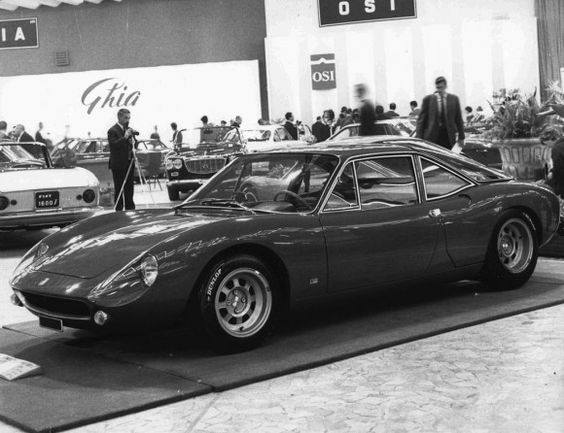
Within a few months, Giugiaro prepared four new models which aroused enormous interest at the Turin Motor Show, all made with the proverbial accuracy that characterized Ghia’s cars: the Maserati Ghibli, the De Tomaso Mangusta, the De Tomaso Pampero and the Fiat Vanessa set on 850 mechanics; all were the expression of one of Giugiaro’s most creative moments, especially in the case of the Maserati Ghibli coupe (4.7-liter V8 engine, 330 HP): its commercial success was so overwhelming (1280 units produced in 1967-1972) that Gaspardo Moro caressed the dream of spreading the Ghia-Maserati combination on the market as an alternative to the Pininfarina-Ferrari one in the field of high-performance grand touring berlinettas.
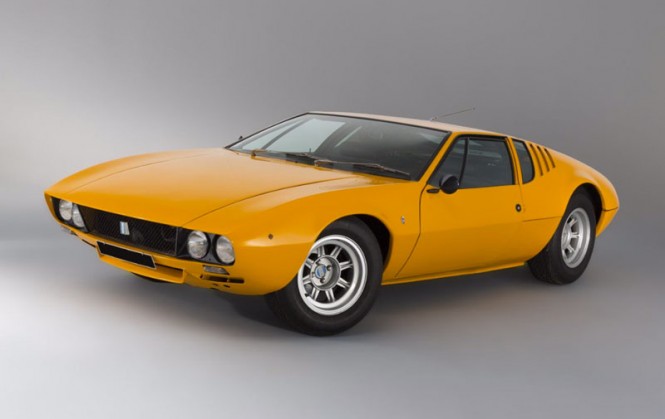
Seriously intending to buy Carrozzeria Ghia, De Tomaso convinced the two major shareholders (his brothers-in-law) of the American Rowan Controller Industries – specialized in electrical components for cars – to finance the operation, and so the company’s shares passed in 1967 from Trujillo to Rowan, together with the last shares still owned by the Segre heirs. Despite the explicit contractual conditions, which excluded De Tomaso’s involvement in the management of the company, he actually took the reins of Ghia, quarreling from the beginning with his closest collaborators, forcing them to leave their jobs.
The American Tom Tjaarda returned to direct the Style Department in 1968 and developed two valuable prototypes on Lancia mechanics: the Fulvia Competizione and the Flaminia Marica, both of very original and pleasant lines; a few months later Fiat entered the capital of Lancia and the two projects were halted.
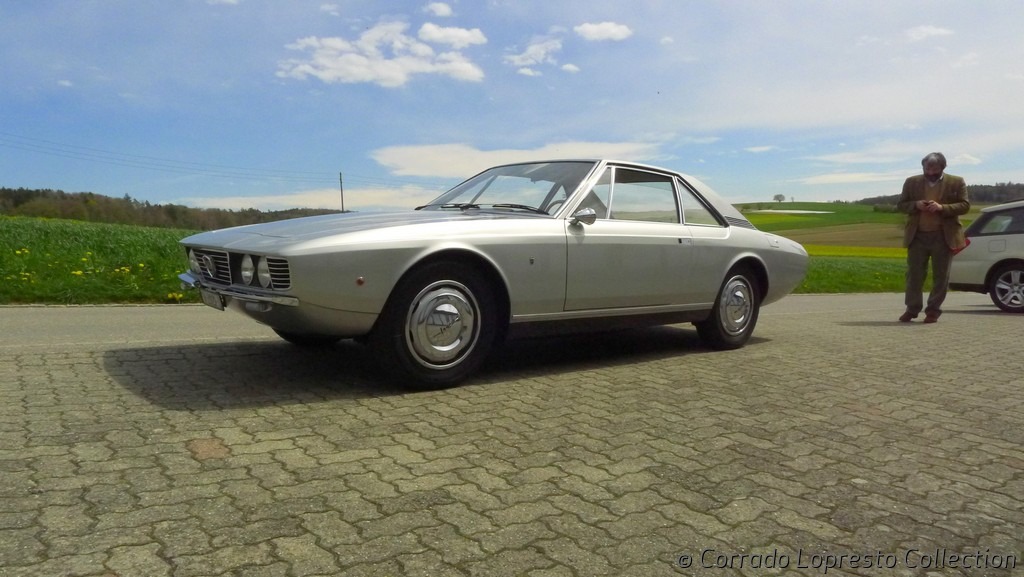
Lee Jaccoca, Ford manufacturer at Detroit, intended to enter the promising supercar market by acquiring Ferrari. After those negotiations failed, De Tomaso – an old friend of Jaccoca’s – received approval for the renewal of the Mangusta on the same technical scheme, but with a different bodywork, which was given the name Pantera. Tjaarda undertook the project in record time.
To meet the commitment to produce the Pantera in small series, De Tomaso broadened his prospects as an entrepreneur and bought Carrozzeria Vignale in December 1969, acquiring a modern factory where cars could be assembled in sufficient numbers to comply with the requests of the overseas market. The entry of the large American group into the capital of Ghia was therefore essential, and a press release from the Ford Motor Company dated August 3rd 1970 announced that the company had acquired 84% of the capital of Carrozzeria Ghia and Vignale in Turin from Rowan, as well as of De Tomaso Automobili in Modena. Following the Pantera, the Deauville sedan and the Longchamp coupé version made their debut in 1970-72, both aimed at competing on the European market against the prestigious Jaguars. In Detroit it was also believed that it was possible to build a customized version of the production Ford Granada, presented with the initials “De Tomaso-Granada” and “Powered by Ford”; an unattractive idea, which resulted in a clear failure.
Ghia as trim level
In the first years of Ford’s shareholding, Ghia had to look for a role within the large American group and Tom Tjaarda signed some interesting style proposals, among which the De Tomaso Zonda (1971), a classic and very refined coupé powered by a Ford V8 engine of almost 5.8 liters (350 hp).
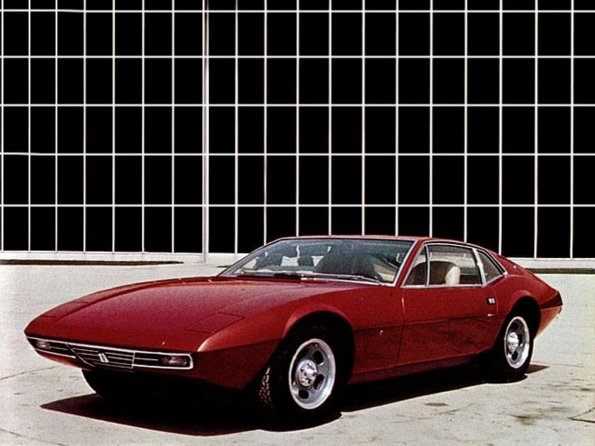
In the meantime, he took on the exciting task of designing an utility car, with which Ford intended to face competition from European manufacturers in the popular car market. Initially identified as Bobcat, the new machine conceived by Tjaarda for the international market was the subject of countless revisions and updates at various Ford style centers; it was presented at the end of June 1976 with the deliberate name of Fiesta and an unprecedented front-wheel drive mechanics, base engine of 957 cm (40 HP), two-volume body, three doors, four seats, weight of 715 kg and maximum speed 130 km / h. The marketing philosophy of the Ford T was practically reinterpreted seventy years later and confirmed by the success that the new small car enjoyed worldwide.
In January 1973, De Tomaso sold his minority stake in the Turin bodywork to Ford and the management passed entirely under the control of Detroit. The management of Ghia was entrusted to the American John Head, flanked by Filippo Sapino, head of the style center that Ford Europe had in Bruino, Turin. He immediately had the difficult task of demobilizing the Bruino headquarters, whose functions were in fact absorbed by Ghia itself. Another thorny issue concerned the coexistence of Sapino and Tjaarda, both with the position of design directors. In reality the situation never degenerated because Sapino was increasingly involved by Head in the role of project manager. On the other hand, Tjaarda did not adapt to the new and cumbersome presence of Ford and soon the decision to leave the company was ripe. In fact, the Ghia design activity had completely lost its autonomy and the work had become no longer proactive, but relegated to the pure execution of the proposals received from the other Ford style centers. The Ghia brand subsequently enjoyed an extraordinary diffusion on the market, as the set-up of the most advanced models in the Ford range was identified by the double Ford Ghia emblem.
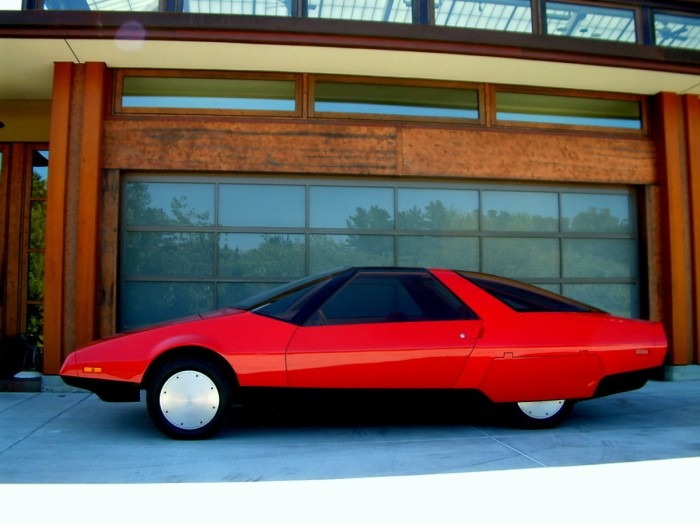
The Megastar prototype was exhibited at the 1977 Geneva Motor Show, considered a sort of rebirth of the legendary Turin coachbuilder; developed on a wheelbase of 2770 mm, the car exhibits a maximum height of 1240 mm and a load volume in the trunk equal to that of a conventional sedan but with a reduced overall length and also an enormous glass surface. Among the numerous other prototypes developed in Turin, the Mustela II and the Coins of 1973-74 stood out, followed in 1979 by the City Car Vignale and the generation of Ford Probes – made by Ghia on projects developed by the Ford Design Center in Detroit – as well as the Escort Brezza from 1982, the Ford Mustang Ghia Vignale and the Ford Via prototype from 1989, as well as the curious double project of the Zig and Zag vehicles on the Ford Fiesta platform, developed as part of a new technical-construction strategy based on the concept of a unified chassis; were both exhibited at the 1990 Geneva Motor Show. At the end of March 2001, Ford announced the decision to transform Ghia into an electronic design center with a staff so drastically downsized as to preclude any possibility of creating a body with a stroke of pencil, into a new entity marked by the times in which we live.
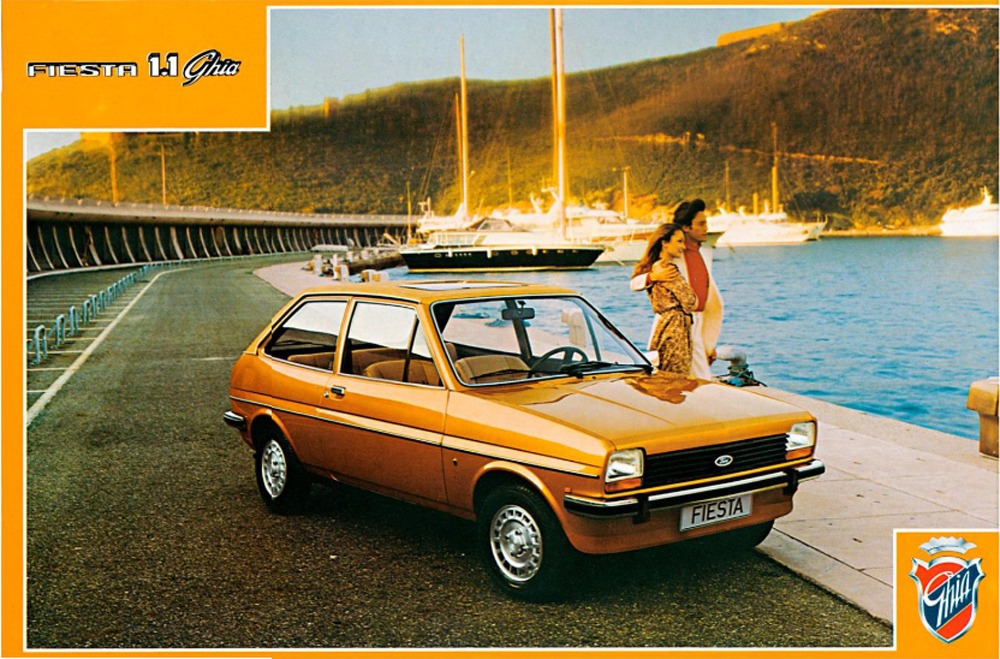
Source:
01. “I Capolovori dello Stile: Ghia-Vignale” by Luciano Greggio – Ruoteclassiche

